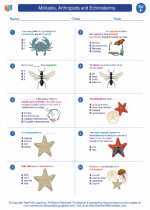Aurora Borealis: An Overview
The Aurora Borealis, also known as the Northern Lights, is a natural light display that occurs in the polar regions of the Earth. It is a breathtaking phenomenon that has captivated people for centuries.
Causes of Aurora Borealis
The Aurora Borealis is caused by the interaction between charged particles from the Sun and the Earth's magnetic field. When the Sun releases a large amount of energy in the form of solar wind, some of these charged particles are drawn towards the Earth's magnetic poles.
As these charged particles collide with the gases in the Earth's atmosphere, such as oxygen and nitrogen, they emit light of various colors, creating the beautiful display of the Aurora Borealis.
Appearance and Colors
The Aurora Borealis appears as colorful curtains or arcs of light stretching across the sky. The most common colors observed are green and pink, but red, yellow, blue, and violet hues can also be seen depending on the altitude and the type of gas particles involved in the collision.
Best Places to See the Aurora Borealis
The best places to witness the Aurora Borealis are in the high-latitude regions near the Arctic Circle, including Norway, Sweden, Finland, Iceland, Canada, and Alaska. These locations offer the ideal combination of clear, dark skies and a high probability of auroral activity.
Study Guide
- What is the Aurora Borealis also known as?
- What causes the Aurora Borealis?
- What are the common colors observed in the Aurora Borealis?
- Where are the best places to see the Aurora Borealis?
Now that you have learned about the Aurora Borealis, take some time to answer the study guide questions and explore further resources to deepen your understanding of this fascinating natural phenomenon!
.◂Science Worksheets and Study Guides Sixth Grade. Mollusks, Arthropods and Echinoderms

 Activity Lesson
Activity Lesson
 Worksheet/Answer key
Worksheet/Answer key
 Worksheet/Answer key
Worksheet/Answer key
 Worksheet/Answer key
Worksheet/Answer key
 Worksheet/Answer key
Worksheet/Answer key
 Vocabulary/Answer key
Vocabulary/Answer key
 Vocabulary/Answer key
Vocabulary/Answer key
 Vocabulary/Answer key
Vocabulary/Answer key
 Vocabulary/Answer key
Vocabulary/Answer key
 Vocabulary/Answer key
Vocabulary/Answer key
 Vocabulary/Answer key
Vocabulary/Answer key
 Vocabulary/Answer key
Vocabulary/Answer key
